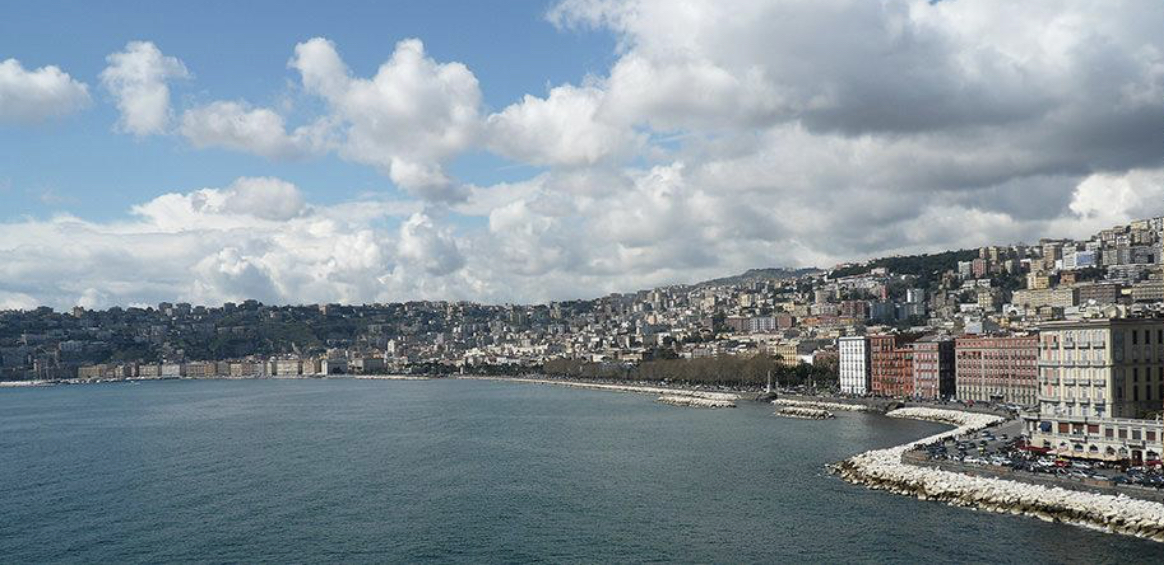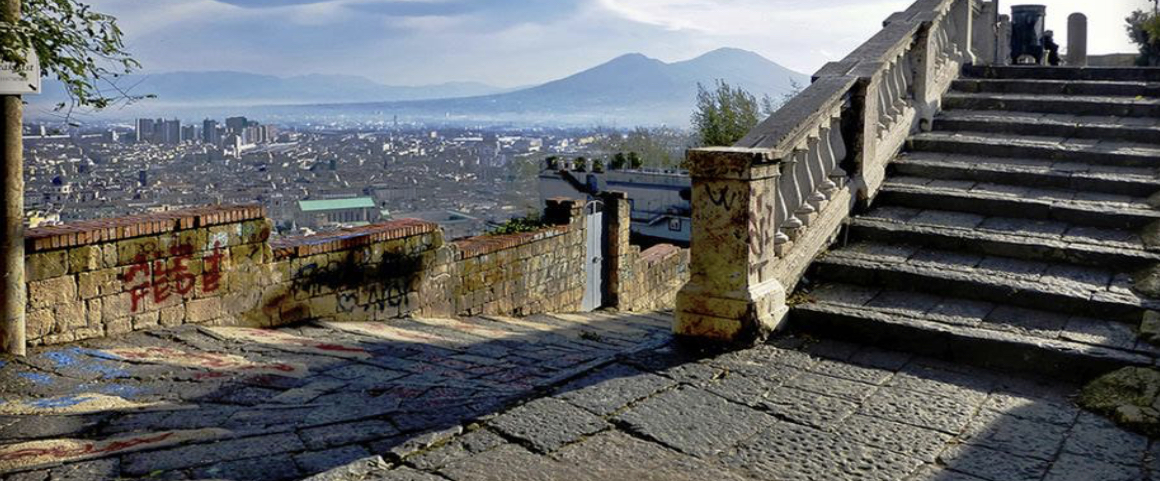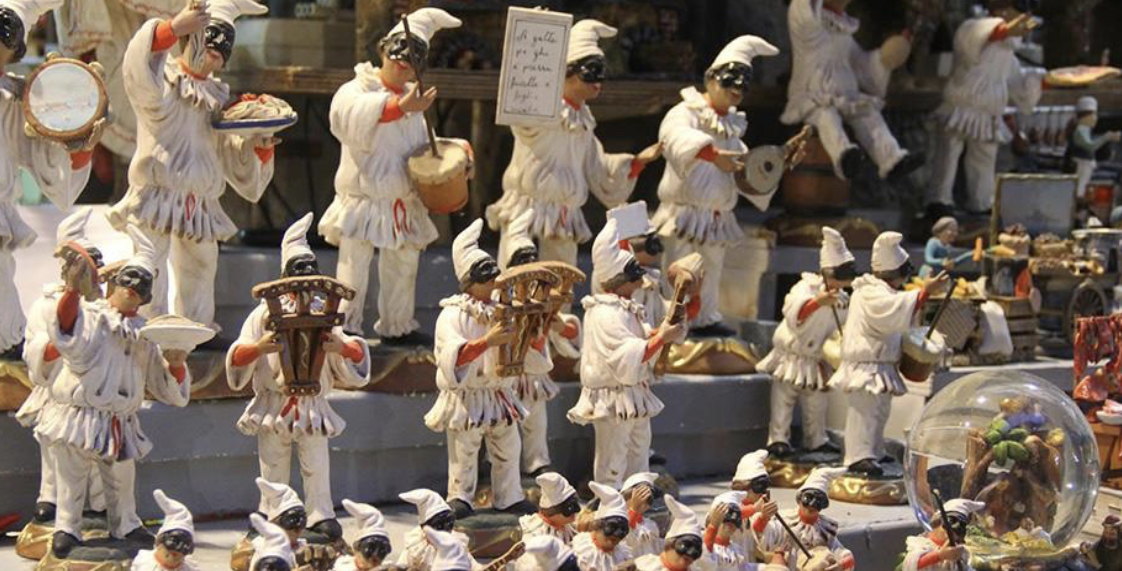Frequently Asked Questions
Pompeii and Herculaneum tour
with the public transportation service, you can reach Toledo Metro station in just a few minutes, and at the Central Station, take the Circumvesuviana train towards Sorrento. In 30 minutes, you will arrive at the Ercolano Scavi or Pompei Scavi stops.
If you prefer the Stress-Free option (cost starting from 120 euros), the staff will organize a private transfer from the Maison to Pompei and/or Ercolano and back.
Seafront and city park
 The one along the seafront is certainly one of the most fascinating walks in Naples, and many citizens and tourists consider it a must-visit in the city, also for the events that are often organized there. Stretching for about 3 km, it extends from Mergellina to Via Nazario Sauro, passing through the famous Via Caracciolo and the lively Via Partenope.
The one along the seafront is certainly one of the most fascinating walks in Naples, and many citizens and tourists consider it a must-visit in the city, also for the events that are often organized there. Stretching for about 3 km, it extends from Mergellina to Via Nazario Sauro, passing through the famous Via Caracciolo and the lively Via Partenope.
The 18th century in the historic center of Naples
Restored and redesigned in the styles of the period, the arch of the portal of Palazzo Carafa di Maddaloni represents an initial encounter with the splendor of eighteenth-century pictorial art, featuring the magnificent fresco by Fedele Fischetti. Continuing, the splendor and extravagance of 18th-century art are explored through significant monuments such as the Sansevero Chapel, a treasury of art and secrets of the De Sangro family, the Cloister of Santa Chiara with its colorful majolica tiles, and Piazza del Gesù with the spire of the Immaculate.
The grand Baroque decoration
Palazzo Carafa di Maddaloni is an example of the splendor and luxury of Neapolitan Baroque style. Just a few minutes on foot, and passing through the Church of San Gregorio Armeno and the Chapel of the Treasure of San Gennaro, we discover what art historians define as the 'Golden Century of Neapolitan Art,' namely the 17th century with its grand Baroque period.
The Naples of the Viceroys: From the Counter-Reformation to the Baroque
100 years before the construction of Palazzo Carafa di Maddaloni, we find ourselves in the 16th century Naples. This century comes to life in the history of the most important monuments in Naples between Via Spaccanapoli and Via dei Tribunali: the Church of Gesù Nuovo and Santa Maria delle Anime del Purgatorio ad Arco, Via San Gregorio Armeno, and the complex of Pio Monte della Misericordia .
The pearls of the Gulf of Naples
Capri, Ischia, and Procida are easily reachable. Molo Beverello is a stone's throw away from the Maison, and the Reception staff will be happy to provide you with information and assist you in purchasing tickets for hydrofoils and ferries.
If you wish, we will be delighted to organize sea excursions along the Neapolitan coastline, with stops at nearby islands, as well as along the Sorrentine Coast and the Amalfi Coast.
The stairs of Naples
 "The stairs of Naples" are ancient pedestrian pathways that connect different areas of the city, typically linking hilly neighborhoods with the city center and the waterfront. They are considered true urban artistic works, and despite the existence of faster and less strenuous means of transportation today, they are still used for their charm. They were built starting from the 16th century when the Spanish viceroy decided to expand the city beyond the Vomero hill, towards the "lower city," but over the centuries, similar pathways were also constructed in other neighborhoods. These staircases offer a beautiful way to explore the city and provide a different perspective, revealing always new corners and vistas. Many have disappeared, but dozens still exist, and among the most famous are the Salita della Pedamentina, the Rampe del Petraio, Calata San Francesco, Salita Moiariello, and the Stairs of Sant'Antonio ai Monti. For more information, you can refer to the section dedicated to the Stairs of Naples.
"The stairs of Naples" are ancient pedestrian pathways that connect different areas of the city, typically linking hilly neighborhoods with the city center and the waterfront. They are considered true urban artistic works, and despite the existence of faster and less strenuous means of transportation today, they are still used for their charm. They were built starting from the 16th century when the Spanish viceroy decided to expand the city beyond the Vomero hill, towards the "lower city," but over the centuries, similar pathways were also constructed in other neighborhoods. These staircases offer a beautiful way to explore the city and provide a different perspective, revealing always new corners and vistas. Many have disappeared, but dozens still exist, and among the most famous are the Salita della Pedamentina, the Rampe del Petraio, Calata San Francesco, Salita Moiariello, and the Stairs of Sant'Antonio ai Monti. For more information, you can refer to the section dedicated to the Stairs of Naples.
The Twentieth Century
Neapolitan Art Nouveau begins with the Galleria Umberto I, strolling along Via Chiaia and Via dei Mille. In addition to being luxury shopping streets, we find buildings like Palazzo Mannajuolo and other constructions from that period. Finally, from the 20th century, Fascism and contemporary art take center stage in this itinerary. At Piazza Matteotti, we discover the rationalist architecture of the early 1900s, while on Via Toledo, with a visit to the Toledo and Montecalvario metro stations, we approach contemporary art and architecture. The itinerary concludes with a visit to the Hermann Nitsch Museum and Casa Morra.
Via Benedetto Croce and Via San Biagio dei Librai
 This stroll leads to the discovery of a part of the historic center where art and culture are breathed at every corner. Immediately after Piazza del Gesù, via Benedetto Croce begins, part of Spaccanapoli, where, in addition to many shops selling traditional Neapolitan items, bars, street food venues, and the famous artisanal chocolatier Gay Odin, stands Palazzo Venezia. So named because it was donated to the Republic of Venice in 1412, it can be visited on the first floor and is mainly used for events, evenings, concerts, and exhibitions.
This stroll leads to the discovery of a part of the historic center where art and culture are breathed at every corner. Immediately after Piazza del Gesù, via Benedetto Croce begins, part of Spaccanapoli, where, in addition to many shops selling traditional Neapolitan items, bars, street food venues, and the famous artisanal chocolatier Gay Odin, stands Palazzo Venezia. So named because it was donated to the Republic of Venice in 1412, it can be visited on the first floor and is mainly used for events, evenings, concerts, and exhibitions.
Continuing, you arrive at Piazza San Domenico Maggiore with the church of the same name and the obelisk, while a little further ahead is Largo Corpo di Napoli with the Statue of the God Nile, a testimony to the presence of an Egyptian community two thousand years ago. From here, via San Biagio dei Librai begins, that is, the Lower Decumanus, dotted with souvenir shops and craftsmanship, with Palazzo Carafa and Palazzo Marigliano towering over it, and where it is possible to visit the Monte di Pietà. About halfway through the route, you come across the famous San Gregorio Armeno.

